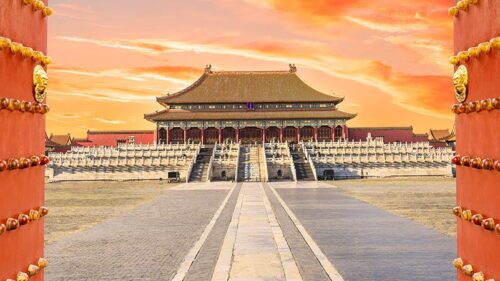US President Donald Trump has suddenly sent the world into upheaval by increasing tariffs on all countries that export to the US. His main target has been China. This move will once again fuel China’s rise, as past US presidents have done. Former US President Bill Clinton admitted China into the World Trade Organization (WTO). Former US President Barack Obama withdrew US forces from Afghanistan and persuaded other countries to share the costs of the war on terrorism. These decisions reduced US dominance in the world. In the resulting vacuum, a multipolar world emerged. Recently, this has shifted to a bipolar world dominated by the US and China.
Now, Trump is trying to assert himself by imposing high tariffs on China and other countries. I believe this will again fuel China’s rise and may lead to its surpassing the US as the most powerful economy in the world by 2040.
The US has been China’s most important market. Many US companies have shifted their manufacturing operations to China and exported finished products back to the US, targeting the Chinese domestic market. Companies like Apple have chosen to manufacture iPhones in China, not just for the US but also for the global market. With its sophisticated manufacturing techniques and high technology, China has fulfilled its vision more effectively than other countries could. China has offered both competitive costs and skills in producing key subcomponents.
Now that the US has forced China to look elsewhere, China is targeting other countries to increase exports and boost domestic consumption. China’s Belt and Road Initiative (BRI) and its “string of pearls” strategy to develop global ports will help it market its products aggressively.
The central Chinese government shapes the country’s global economic strategy. It takes political risks to enter new markets and leverages those opportunities to sell its surplus cement, steel, and technology. Additionally, it secures essential minerals for high-tech products. Chinese companies, employing Chinese labor and financing from Chinese banks, construct infrastructure and stimulate economic development, thereby strengthening China’s economy.
China has expanded trade with Saudi Arabia and Russia. It has begun conducting bilateral trade with other countries, including India, using local currencies instead of the dollar. This undermines the dollar’s dominance in global trade.
China also plays a leading role in the BRICS group and has strengthened its ties with the Association of Southeast Asian Nations (ASEAN). It has increased trade and signed agreements using its currency. China has also gained power in global organizations like the UN by leading committees and providing funding. It leverages these positions to expand its influence. With high labor costs pricing the US out of manufacturing, Chinese companies have acquired closed US firms in sectors such as automobiles to gain direct access to the US market. In the future, China will likely increase its investments in the US, subject to American approval, to bypass tariffs.
China holds approximately $760 billion in US Treasury securities. It may reduce these holdings and invest in other currencies and precious metals, such as gold and silver, to offset risks associated with holding US assets. Some have attributed Trump’s partial rollback of tariffs to concerns over falling bond prices caused by foreign sales of US debt. This situation raises interest yields and could eventually harm the US dollar’s status as the global reserve currency. Asia will drive global growth, and China is better positioned than the US to serve this region due to its geographic proximity and strong trade ties.
China’s technological advancements raise concerns. Telecom giant Huawei has developed superior 5G technology, prompting the US to pressure allies against using Chinese equipment and to restrict chip sales to China. In response, China has significantly increased its spending on research and development to achieve self-sufficiency in high-tech manufacturing. It sources raw materials through existing international networks. While the US still leads in software, particularly due to the use of English, China has developed alternatives in Chinese. This development could have significant consequences for the global tech industry.
The US withdrawal from global leadership has allowed China to deepen its ties with Russia and Saudi Arabia. China’s existing networks in Africa, South America, and Asia position it as a significant international player. China has surpassed the US to become Brazil’s largest trade partner. Additionally, Australia relies heavily on China for coal, iron ore, and other minerals. This indicates that China engages with countries on every continent, including the US.
This will facilitate China’s rise to become the dominant global power by 2040. US influence in Europe has waned, and many European countries have relocated manufacturing to China. This shift has economically pulled Europe closer to China, even if its political and institutional ties remain stronger with the US.
China, with military support from Russia, has become a formidable force. While the US still dominates militarily, China now poses a serious challenge. In economic terms, it is likely that China will surpass the US in the coming decade.
[Nicolette Cavallaro edited this piece.]
The views expressed in this article are the author’s own and do not necessarily reflect Fair Observer’s editorial policy.
Support Fair Observer
We rely on your support for our independence, diversity and quality.
For more than 10 years, Fair Observer has been free, fair and independent. No billionaire owns us, no advertisers control us. We are a reader-supported nonprofit. Unlike many other publications, we keep our content free for readers regardless of where they live or whether they can afford to pay. We have no paywalls and no ads.
In the post-truth era of fake news, echo chambers and filter bubbles, we publish a plurality of perspectives from around the world. Anyone can publish with us, but everyone goes through a rigorous editorial process. So, you get fact-checked, well-reasoned content instead of noise.
We publish 3,000+ voices from 90+ countries. We also conduct education and training programs
on subjects ranging from digital media and journalism to writing and critical thinking. This
doesn’t come cheap. Servers, editors, trainers and web developers cost
money.
Please consider supporting us on a regular basis as a recurring donor or a
sustaining member.
Will you support FO’s journalism?
We rely on your support for our independence, diversity and quality.










Comment